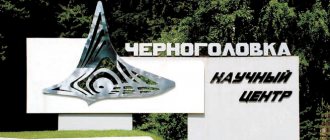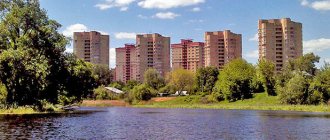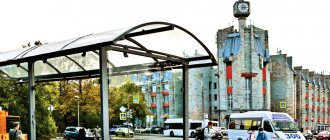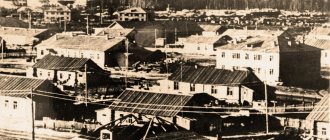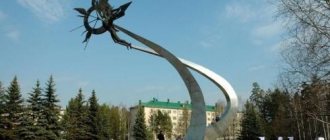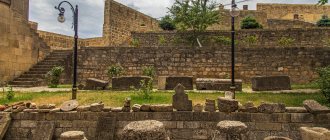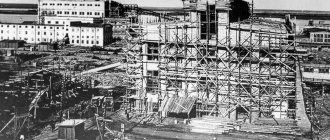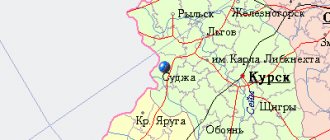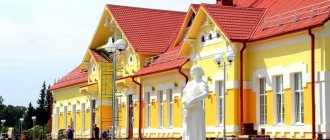For other places with the same name, see Kurlovo.
City in Vladimir region, Russia
| Kurlovo Kurlovo | |
| City [1] | |
| Flag Coat of arms | |
| Kurlovo | |
| Kurlovo Kurlovo Show map of Russia Kurlovo Kurlovo (Vladimir region) Show map of Vladimir region | |
| Coordinates: 55°27'N 40°39'E / 55.450°N 40.650°E / 55.450; 40.650 Coordinates: 55°27'N 40°39'E. / 55.450°N 40.650°E / 55.450; 40.650 | |
| A country | Russia |
| Federal subject | Vladimir region [1] |
| Administrative region | Gus-Khrustalny district [1] |
| Based | 1811 |
| City status from | 1998 |
| Height | 130 m (430 ft) |
| Population (2010 Census) [2] | |
| • General | 6 764 |
| • Evaluate (2018) [3] | 5992 ( -11,4% ) |
| Municipal status | |
| • Municipal district | Gus-Khrustalny municipal district [4] |
| • Urban village | Kurlovo urban settlement [4] |
| • Capital from | Kurlovo urban settlement [4] |
| Timezone | UTC+3 (MSK[5]) |
| Postal code [6] | 601570 |
| OKTMO ID | 17620115001 |
| Web site | Kurlovo-City .ru |
Kurlovo
(Russian: Kurlovo) is a town in the Gus-Khrustalny District of Vladimir Oblast, Russia, located 80 km (50 mi) south of Vladimir, the administrative center of the region. Population: 6,764 (2010 census); [2] 7,433 people (2002 census). [7]
Links[edit]
Notes[edit]
- ^ abcd Resolution No. 433
- ^ a b Federal State Statistics Service (2011). All-Russian Population Census 2010. Volume 1 [All-Russian Population Census 2010, vol. 1]. All-Russian Population Census 2010 [All-Russian Population Census 2010] (in Russian). Federal State Statistics Service.
- "26. The size of the permanent population of the Russian Federation by municipalities as of January 1, 2022". Federal State Statistics Service. Retrieved January 23, 2022.
- ^ abcd Law No. 69-OZ
- "On the Calculation of Time". Official Internet portal of legal information
. June 3, 2011. Retrieved January 19, 2022. - Post office. Information and computing center of OASU RPO. ( Post office
).
Search for postal service objects ( postal Search for objects
) (in Russian) - ↑
Federal State Statistics Service of Russia (May 21, 2004). The population of the Russian Federation as part of federal districts, urban settlements, settlements, settlements, settlements, settlements, settlements, settlements, settlements, settlements, settlements settlements, settlements, settlements, settlements.[Population of Russia, its federal districts, constituent entities of the Federation, districts, urban settlements, rural settlements - administrative centers and rural settlements with a population of more than 3000 people] (XLS). All-Russian Population Census of 2002 [All-Russian Population Census of 2002] (in Russian).
Kurlovo
Founding of the factory village and origin of the name
The city of Kurlovo was founded as a settlement at a glass factory. The factory was founded in the spring of 1811 by Sergei Akimovich Maltsov from the famous Maltsov dynasty of industrialists. The city carefully preserves a folk legend, according to which it got its name from the cry of a crane.
This story happened in May 1811, when S. A. Maltsov, the new owner of the Gusev glass factories, arrived in these places. He was accompanied by foreign engineers invited by Sergei Akimovich to work. The owner was choosing a place to build a new glass factory. The location for the future plant was chosen; here, according to Maltsov, there was enough clay, sand, forest and water. Hearing the cry of flying cranes, the Belgian engineer remarked with a smile: “And there is even music - kurls, kurls!” Sergei Akimovich exclaimed in response: “That’s the name of the plant – Kurlyvo!” The plant founded on these lands and the settlement attached to it have since been called Kurlyvo. Over the years, the name transformed into Kurlovo.
The plant was built in a short time; it was made of spruce and pine. At a small enterprise, they installed two kilns - a pot kiln and one for firing products, and built a barn, a shed and a pottery room. Near the plant, wooden houses for workers appeared, housing two families. Serfs were recruited as labor force. Workers were provided with food and other goods according to “fence books”; prices were approved by the owner.
The first settlers lived in the most difficult conditions; work at the factory was hellish. At that time, glass was produced in the most primitive way. In the absence of basic mechanisms, all operations were performed manually, and the workers' main tool was a shovel, which was used to mix the mixture and waste used for glass melting in troughs. The finished sheets of hot glass were also removed from the furnace with a shovel. Smoothers worked using wooden smoothers, glassmakers stirred liquid hot glass in clay pots with metal poles. Women and teenagers worked equally with adult men – 12–15 hours a day. The unbearable stuffiness from burning and carbon monoxide, the heat from the stoves had a negative impact on the health of workers, shortening their lives. In addition to hellish labor, people's health was undermined by miserable food and unsanitary conditions in cramped huts, in which domestic animals huddled together with people in the winter. And no one had the right to build their own housing on the breeder’s land.
Development of the village in the 19th – early 20th centuries
According to information from 1857, in the settlement near the plant there were 15 huts, 94 people lived in them. By 1860, the plant employed 29 main workers; they annually produced over 100 thousand units of glassware with a total value exceeding 19 thousand silver rubles. The workers themselves struggled to make ends meet, earning pennies. They lived from hand to mouth, died from fever and tuberculosis, the average life expectancy was 40–45 years. People had no rights; the offender could be beaten to death with whips, exiled to Siberia, or kicked out of his apartment. The abolition of serfdom also did not bring relief - the peasants had nowhere to go, there was no money for this, they still depended on the owner. So at the end of the 19th century, even the best glassmakers of the factory eked out a miserable existence, among them Vasily Efimov and the four Chernyshev brothers, who, in addition to standard products, could make exquisite glass objects.
But still, some changes took place in the lives of workers. A stone bathhouse was built for them. In 1844, a stone building was built in which a primary school with 40 places was opened. A hospital was opened in a separate wooden building, where there was a hospital with 4 beds, an outpatient clinic and a pharmacy. The hospital was run by a paramedic. Two settlements grew up - New and Old; they were built up with small wooden houses, in which two families of craftsmen, workers and employees also lived. A two-story stone barracks was built to house the general workers.
Product output at the plant grew steadily. In 1910, the plant produced 14 thousand boxes of window glass and 160 thousand pounds of tableware. The increase in production volumes became possible mainly due to an increase in the number of workers - in 1910, 244 people worked at the plant. The production technology remained old. But under the influence of new, revolutionary ideas, the consciousness of the workers changed, which was facilitated by illegal literature, promptly delivered to the Kurlovskoye settlement by narrow-gauge railway by railway workers.
After the revolution
At the beginning of 1917, there was a surge in the revolutionary mood of the workers, and in March 1917, on this wave, a temporary executive committee of the plant was elected, and on March 14, a party cell of the RSDLP (b) was created, which included 15 people under the leadership of Nikolai Stepanovich Lebedev. On April 19, the first trade union of workers and employees was organized in the history of Kurlovo, and then a food committee, designed to manage the supply of food to workers. Already on April 21, a factory Council of Workers' Deputies operated on the territory of the settlement, and an eight-hour working day was introduced at the factory.
Ignatiev, who was the owner of the plant at that time, was forced to flee to Canada, having previously transferred the rights to the glass factories, including Kurlovsky, to the Yu. S. Nechaev - Maltsov’s heir,” the owners of the joint-stock company were three Moscow entrepreneurs - Schlippe, Bryansky and Chizh. In response to exploitation, workers began to organize strikes, demanding higher wages and better working conditions. Shareholders were forced to make concessions.
After the revolution in the fall of 1917, the workers of the plant created the Kurlovsky Military Revolutionary Committee, which concentrated in its hands all power in the village of Kurlovsky, acting promptly and decisively. The Kurlovsky party cell also played a large role in strengthening power. From February to March 1918, elections to the Soviets were held.
During the Civil War, residents of Kurlovo fought with the White Guards in different parts of the country. Kurlov glassmakers fought on the Don with General A. M. Kaledin, with the Austro-German troops on the line Poltava - Kiev, Kupyansk - Kharkov, near Voronezh, on the Volga as part of Chapaev's division. Among those who fought for the young Soviet Republic were Rozhkov A.I., Bogdanov M.A., Ivanov V.M., and the Andreev brothers.
By decree of the Presidium of the National Economic Council of December 14, 1918, the plant was nationalized, and its assets were declared the property of the Soviet Republic. Management of the enterprise passed into the hands of the workers.
The year 1921 turned out to be difficult for the Kurlovites. The plant experienced a shortage of raw materials and fuel. Every family is involved in fuel procurement. Production volumes are reduced, and workers' salaries are partially paid in glass, which can be exchanged for bread and potatoes in nearby villages. People are starving, but continue to work. The Vladimir-Tuma narrow-gauge railway is being reconstructed. The People's House is opened in a stone two-story building of a former barracks; lectures, reports on various topics, and amateur performances are held in its premises. The Blue Blouse propaganda team gave concerts not only in the village of Kurlovo, but also traveled to Tuma, Velikodvorye and Gus-Khrustalny. Komsomol members took an active part in the fight against illiteracy.
By 1923 the village had changed. The number of apartments reached 250, and the population reached 2 thousand people. The first seven-year school was opened near the plant; about 200 children of workers and employees of the enterprise studied there; the learning process was conducted by 7 teachers. The village has noticeably improved - to drain the streets, ditches with a total length of over a kilometer were dug, and the roads were primed. Already in 1924, most of the settlement was electrified. Housing cooperative activities began - the construction of so-called Fubrov houses began for workers. In July 1925, the second building of the hospital, a maternity ward, and a residential building for medical personnel were built.
In the mid-1920s. the plant was named after the revolutionary V. Volodarsky, who was shot by the Socialist-Revolutionary N. Sergeev in June 1918. During the NEP, the plant produced 1,400 boxes of window glass monthly, the number of workers exceeded 700 people, during this period the work shift was reduced to 6 hours. In 1927, the settlement was given the status of a working settlement of Kurlovsky. By the end of the first five-year plan, the plant named after. Volodarsky became the 4th enterprise in the country to introduce mechanized glass production. In 1935, for the first time during Soviet rule, the plant became profitable.
On January 25, 1935, the Kurlovsky district was formed as part of the Ivanovo Industrial Region, which existed until 1963, the center of which became the Kurlovsky village. The Kurlovsky district included most of the lands of the Gusevsky district, including 24 village councils; the Velikodvorsky, Aksenovsky, and Zolotkovsky glass factories were located on the territory of the new district. In the village of Kurlovsky, which became the regional center, all regional institutions corresponding to its new status were opened, in which many women - the wives and daughters of factory workers - got jobs. On January 1, 1935, the rationing system for bread was abolished, and on September 25, bread prices were reduced. Residents of the village felt an improvement in the material side of their lives.
In the mid-1930s. Work was carried out to improve Kurlovsky: construction of a water supply system, construction of walkways, and drainage of streets began. Administrative and residential buildings, social and welfare facilities were built. All this was done with the active participation of the city-forming enterprise - the plant named after. Volodarsky. An important event was the opening of the second bakery. Before this, there were problems with bread, but now two bakeries, the total capacity of which reached 4.5 tons, could fully meet the needs of the village, which at that time numbered about 4.5 thousand inhabitants.
In the village of Kurlovsky, the regional newspaper “Bolshevik Way” was published with a circulation of 2,500 copies 5 times a week. Its first editor was the talented journalist and honest citizen I. I. Belov.
The Great Patriotic War
On June 22, 1941, hundreds of residents, who came out that day for a mass Sunday dedicated to the improvement of the village, heard from the loudspeaker located near the club: “War...”. On the same day, rallies were held at the plant, and volunteers in the village began to sign up for the front. Among the volunteers there were women and girls. During the Great Patriotic War, 1,700 people went to the front from the village of Kurlovskoye, of which 680 died, went missing or died in hospitals from wounds. The entire burden of working life fell on the shoulders of those remaining in the village - old people, women and children.
Repeatedly, German planes bombed the nearby Nechaevskaya station. Equipment of the plant named after. It was decided to evacuate Volodarsky to the Urals. The dismantling of machinery and equipment was carried out by women, teenagers and old people, and they sent it from the station. Nechaevskaya. And after the defeat of the German army near Moscow, they urgently prepared unsent equipment for work in cold workshops, restored the plant, where they began producing silicate block for the front - glass, which was used when heated to fill dugouts, as well as other military facilities, being a replacement for reinforced concrete .
The city of Kurlovo in the modern period
In the post-war years at the plant named after. Volodarsky switched to producing exclusively sheet glass; it was urgently needed by the industry of the country, which began the restoration of factories, factories and residential buildings. During these years, the plant was reconstructed, an instrument shop was created in the shortest possible time, then a glass block, fiberglass, and pressed crystal workshop was created. The production of display glass was mastered, and in the 90s. The range of products was expanded to include glass bottles, tinted glass, instrument glass, safety glass, automobile glass, quartz ceramics, double-glazed construction windows and even colored glass souvenirs.
During this period, the plant actively participated in the construction and improvement of the village - new brick residential buildings were built, streets were improved. The plant's products have been awarded numerous awards at both domestic and international exhibitions. In 1990, a physical culture and health complex was put into operation, in which residents have access to a swimming pool, sports halls and gyms.
In 1998, the village of Kurlovsky was given the status of a city and the name Kurlovo. The city's infrastructure has everything necessary for a comfortable stay for its citizens, of whom there were 6,516 people as of January 1, 2013.
